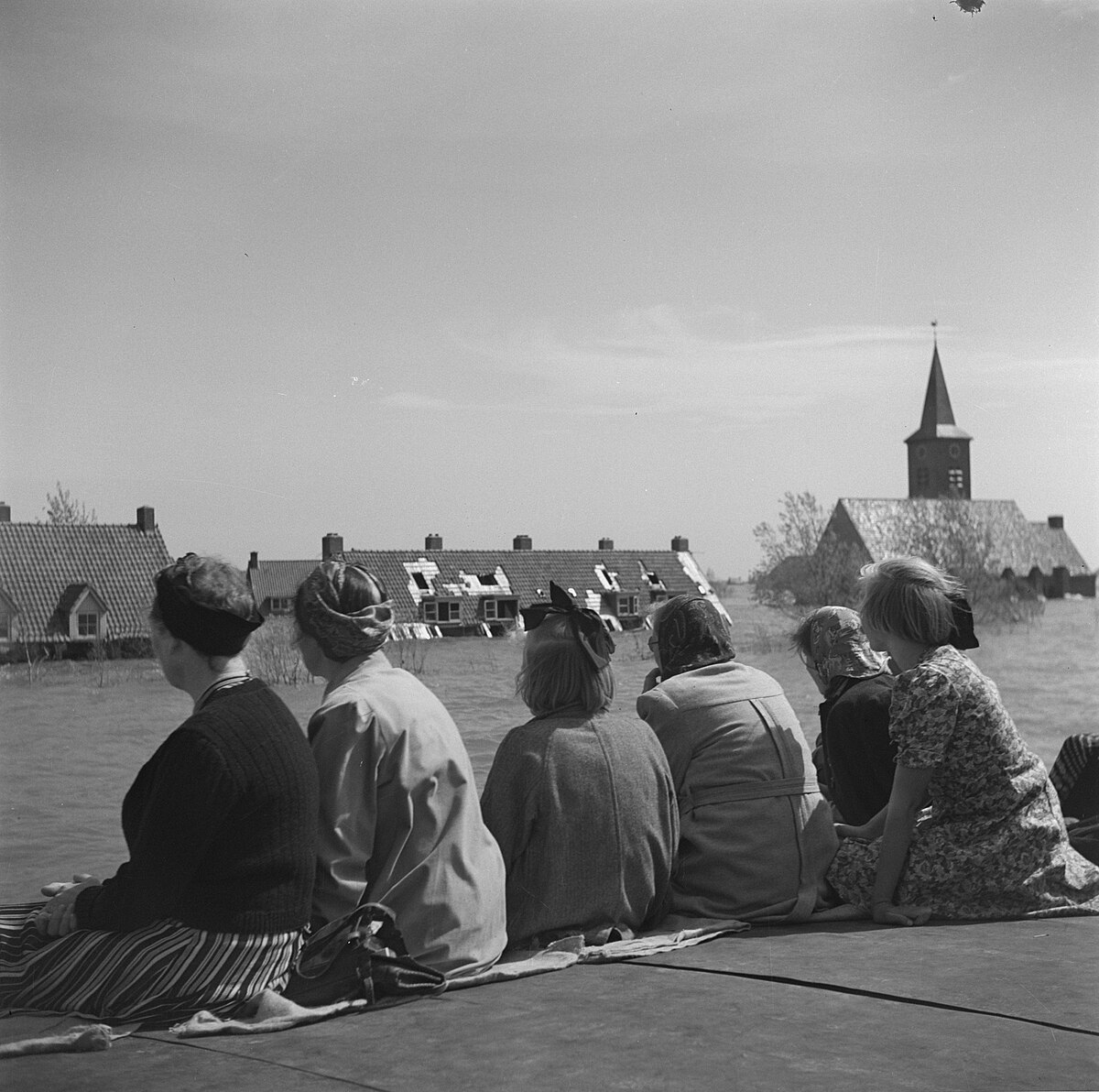
Zuiderzee Works
Zuiderzee, NetherlandsQueen Wilhelmina's 1913 throne speech urged the land reclamation of the Zuiderzee. When Lely became Minister of Transport and Public Works that year, he used his position to promote the Zuiderzee Works and gained support. The government started developing official plans to enclose the Zuiderzee. On January 13 and 14, 1916 the dikes at several places along the Zuiderzee broke under the stress of a winter storm, and the land behind them flooded, as had often happened in previous centuries. This flooding provided the decisive impetus to implement the existing plans to tame the Zuiderzee. In addition, a threatening food shortage during the other stresses of World War I added to widespread support for the project.
On June 14, 1918, the Zuiderzee Act was passed. The goals of the Act were threefold:
- Protect the central Netherlands from the effects of the North Sea;
- Increase the Dutch food supply by development and cultivation of new agricultural land; and
- Improve water management by creating a freshwater lake from the former uncontrolled salt water inlet.
Unlike earlier proposals the act intended to preserve part of the Zuiderzee and create large islands, as Lely warned that rerouting the rivers directly to the North Sea might cause inland flooding if storms raised the sea's level. He also wanted to preserve the Zee's fisheries, and for the new land to be accessible by water. The Dienst der Zuiderzeewerken (Zuiderzee Works Department), the government body responsible for overseeing the construction and initial management, was set up in May 1919. It decided against building the main dam first, proceeding to construct a smaller dam, the Amsteldiepdijk, across the Amsteldiep. This was the first step in rejoining the island of Wieringen to the North Holland mainland. The dike, with a length of 2.5 km, was built between 1920 and 1924. As with dike building, polder construction was tested on a small scale at the experimental polder at Andijk.
